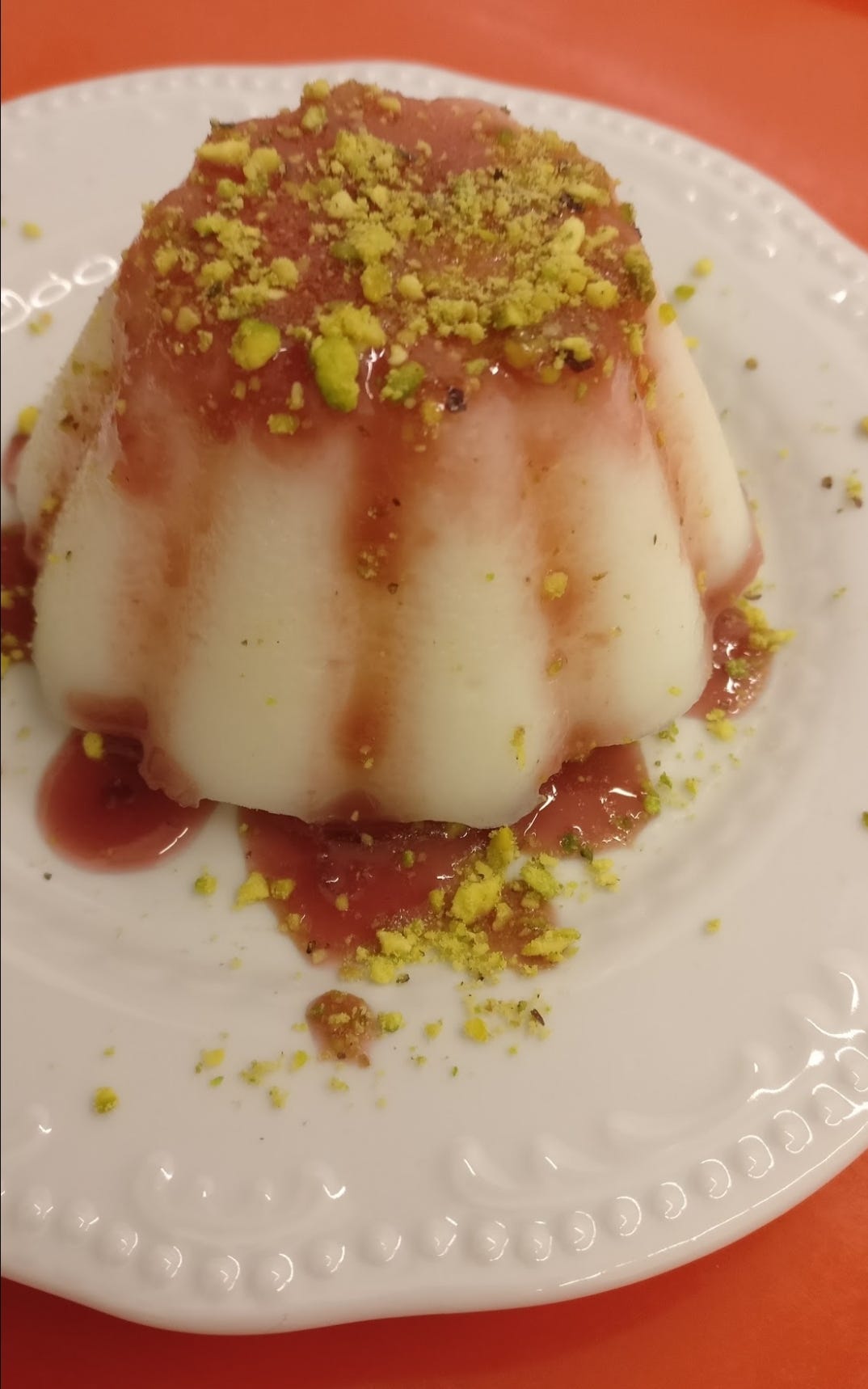Attitudes to this dessert are very continental and controversial. In England it is considered a “cheap child's dessert” (mark my partner's word), while in France and Italy, it is considered a light and elegant after-dinner pudding, and I would like to introduce you to this dessert again in this spotlight.
In Canterbury's Tales, the cook, whose name is Roger, is described by Chaucer as a naughty fellow who controversially “made pudding that [Chaucer] would equate with the best”. Back in the 15th century, the main ingredients for pudding were milk or almond milk, sugar and shredded chicken (usually capon) or fish, often mixed with rose water and rice flour and stirred into a bland stew. It was considered the best remedy for sick people.
It also appears in the last chapter (The Dead) of James Joyce's book “Dubliners” when he describes the New Year’s Eve meal placed on the table alongside "a fat brown goose", "a great ham" and a variety of Yuletide treats. Joyce added this dish to the table as an artist would a bright white brush stain placed deliberately in the centre of the painting to make it a symbol of an integrated European identity, as the dish is very un-Irish.
You see, the choice of recipes can sometimes be a political statement.
As it is for me, I learned this recipe when I was working in one of the busiest and most disorganised kitchens (I wasn't the head chef, of course) and the person running the show cooked this pudding as her signature pudding for the Sunday menu. She gave me the recipe and asked me never to cook this dish outside the kitchen (“asked me”, not “made me promise”, a loophole for the gentleman). She always advised me to “tone myself down" with clients and colleagues because that wasn't the place to talk about pride, sexuality or identity, and when I suggested adding some syrup to the recipe, she was horrified and kept telling me to tone myself down on food too.
It's with great pleasure that I share her recipe with the world and add my Negroni twist that makes it perfect.
Tone your conservative notions down, madam, and let me quote To Wong Foo: “Sometimes larger than life is just the right size”. And snap.
French: blanc-manger
English: blancmange
Italian: biancomangiare
Spanish: manjar blanco
German: Blamensir
The name derives from its original main ingredients, all white in colour: almond, milk and chicken.
Ingredients:
1 lt milk (you can use vegetable milk but it must have a minimum 0.7% of almond/soy/ oat)
300g caster sugar
120g cornflour
zest of 1 lemon (or 1 tsp of almond essence)
Prep time: 5 mins
Cook time: 15 mins (plus 3 hours to set)
Serves: 6
Method:
- In a medium-sized pan heat the milk, and add the lemon zest (with a knife try to cut it off all in one piece so it will be easier to remove later)
- Slowly add the sugar and keep stirring until it dissolves.
- Add the cornflour (sift it in, to avoid lumps).
- Keep stirring gently until it reaches a dense but still soft texture (less than 5 mins on a medium-low heat)
- Discard the lemon zest from the mixture
- Divide the mix into 6/8 moulds and let it cool down for 10/15 mins.
- Keep it in the fridge minimum of 3 hours to set. (Cover the moulds with cling film to avoid the mixture absorbing any other flavour/smell from the fridge and to prevent skin from forming).
Negroni syrup:
- 1 tbsp of gin
- 1 tbsp of Campari
- 1 tbsp Sweet vermouth
- twist of orange zest
- 2 tbsp of caster sugar
- In a small pan heat the mixture and stir for about 2 minutes, turn off the heat, and let it sit until it is cool. Transfer to a bowl and add to the blancmange before serving.
- Sprinkle with pistachio crumbles.





